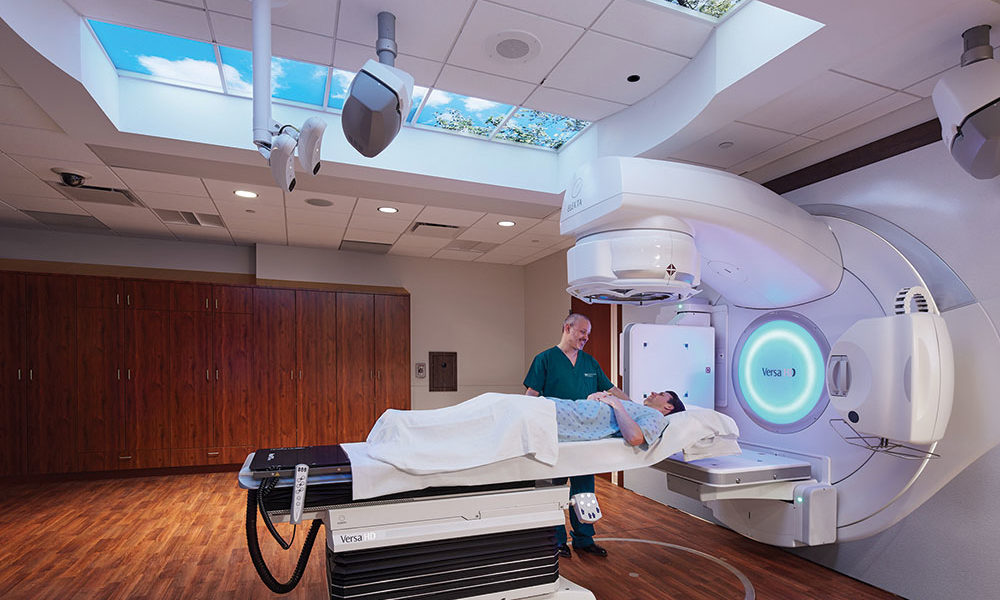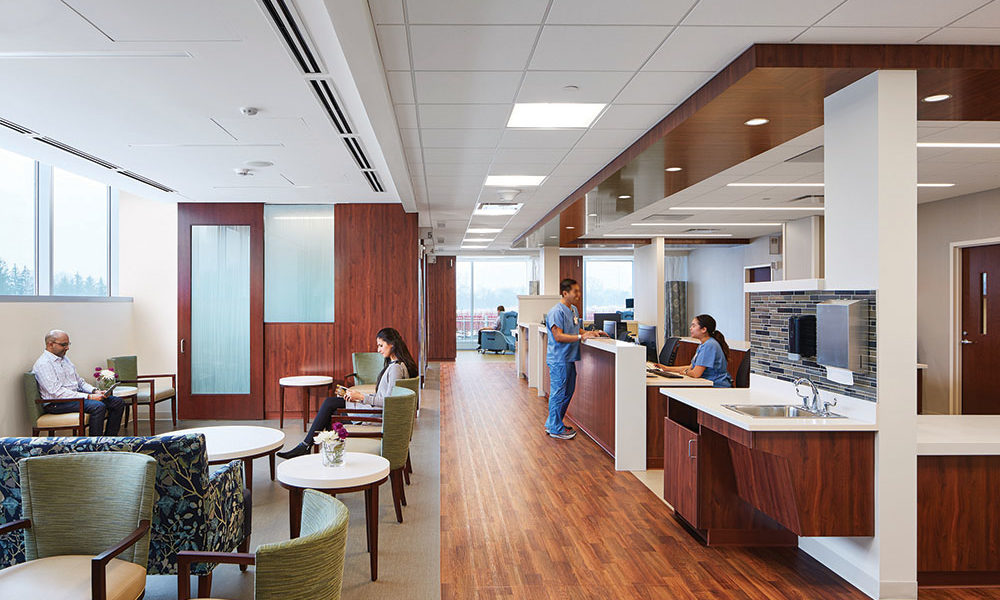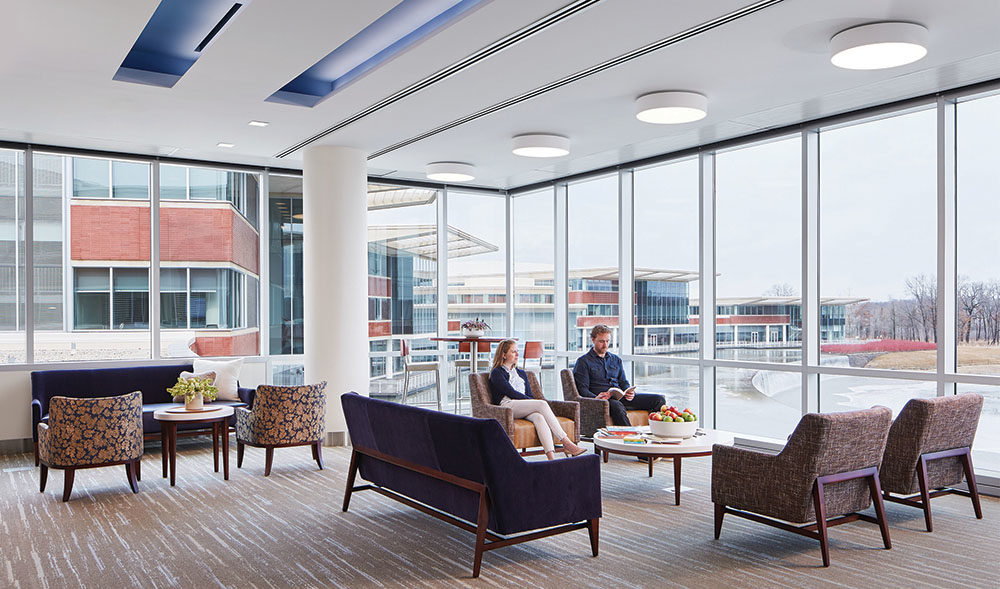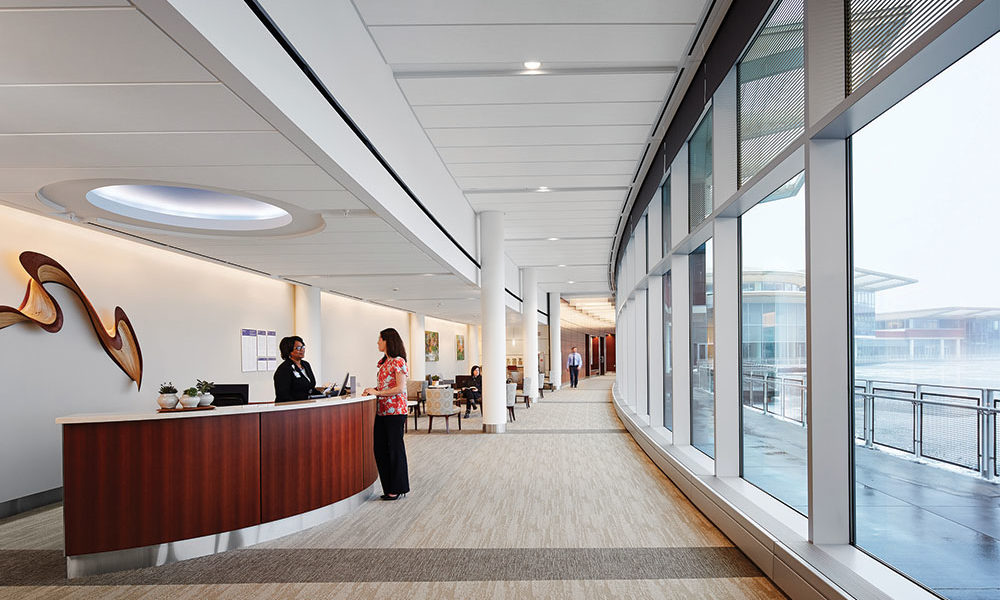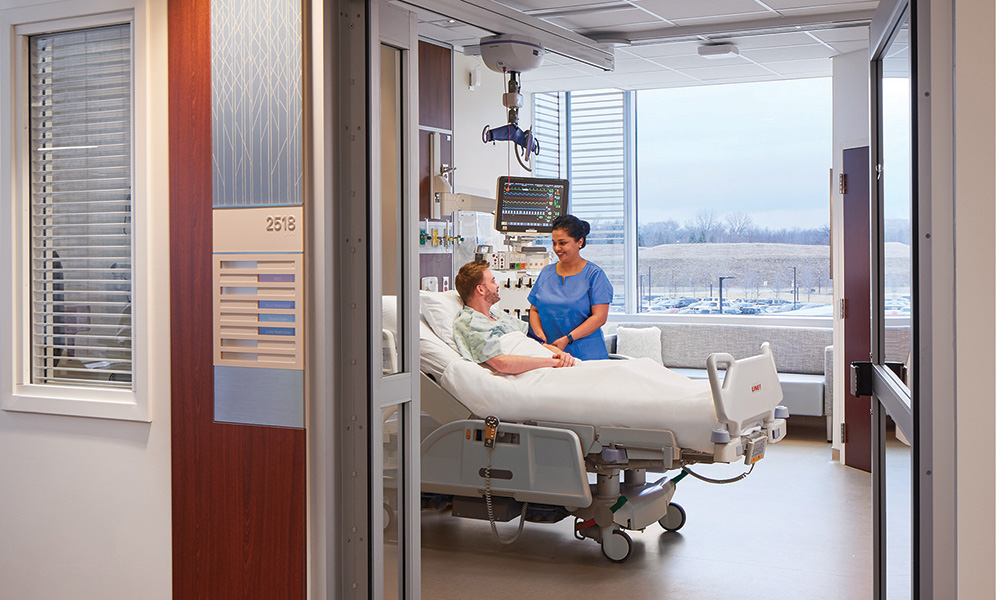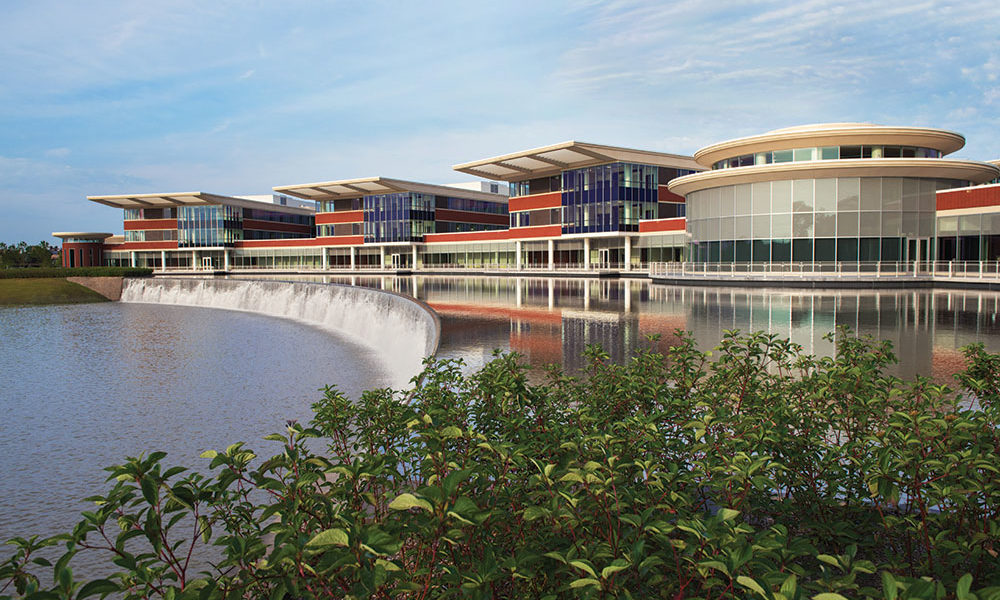Mechanics of LEED: Combining holistic design desires + MEP design requirements
By Samantha Davidson, Kenneth Griffin & Elliot Weiss | Photos by Dave Burk
Good hospital design and the USGBC’s Leadership in Energy and Environmental Design performance rating system didn’t always go hand-in-hand. Today, they finally do. When there’s a holistic design approach that marries the hospital’s architectural desires with MEP design requirements, LEED certification is possible.
Case in point: Northwestern Medicine’s new Lake Forest Hospital campus in suburban Chicago, Illinois. Ranked 18th Best Hospital in the Chicago area by U.S. News and World Reports, the new 500,000-square-foot hospital is targeting LEED BD+C: Healthcare v3 Silver certification for its creative sustainable design.
The following are lessons learned in designing sustainable hospitals, like NMLFH, for LEED certification:
1. Create an energy model to be utilized for LEED certification and beyond
An energy model is more than just a way to demonstrate code compliance or achieve energy performance points for LEED; it is also a design tool. Create an energy model to be used throughout the hospital’s design process to optimize energy performance.
At NMLFH, the energy model was used to track LEED energy performance, while also analyzing the performance of different design strategies. Energy conservation measures included optimizing the thermal performance of the façade, while balancing the solar heat gain of the glass, external shading techniques, LED lighting, lighting controls, low-flow water fixtures, perimeter radiant heating and air handling units with steam humidifiers, minimum efficiency reporting value filtration and variable speed controls. Ultimately, the NMLFH energy model achieved a 23 percent improvement in annual energy costs over the ASHRAE 90.1 2007 baseline model.
TIP: Don’t forget to account for pressure drop adjustments. When MERV filters are used in hospital AHUs, remember to account for the particulate filtration credit in the LEED baseline model. Then, it’s possible to claim additional fan savings in the final LEED model.
2. Consider LED lighting, controls and a lighting power density study
Oftentimes, the amount of lighting needed in a hospital is in direct opposition to the LEED objective of minimizing lighting power density. Therefore, hospitals should consider pursuing the lighting power density space-by-space approach to achieve LEED, with higher allowances in certain areas and lower allowances in others. This will help achieve a greater reduction in lighting power density versus the total building lighting method.
Using this approach via a lighting power density study, the NMLFH design achieved .97 watts/square foot light compared to the LEED minimum of 1.20 watts per square foot. This was achieved by employing LED lights and by treating office areas, the healthcare clinic and the hospital as separate lighting zones.
Occupancy sensors and daylight photosensors were installed throughout the building to reduce lighting in unoccupied spaces and capture the benefit of natural light whenever possible.
TIP: Install daylight controls in the perimeter zones, and occupancy sensors throughout the building. With so many internal loads in a hospital — medical equipment, exhaust fans and required heating and cooling — minimizing the lighting load will help reduce additional heat gain.
3. Reduce hospital water usage
From an infection control standpoint, water usage is critical. That’s why fixtures used for clinical use, such as surgical scrub and exam sinks, are exempt from LEED water use reduction. Instead, reduce water in patient rooms, general bathrooms and employee pantry sinks. Aerators, for example, can’t be installed on faucets in patient rooms or in ORs as they accumulate bacteria and water stagnates there. But, they can be installed in public spaces where there’s less risk of infection.
At NMLFH, water fixture use was reduced by 20 percent and domestic hot water usage was reduced by 26 percent. This was done by specifying low-flow and flush water fixtures where possible and utilizing non-potable water for mechanical equipment. While this is a prerequisite to LEED, it’s very challenging as .5 gallons per minute is counterintuitive for a nurse’s station, for example, as they need more flow.
TIP: Consider creative “trades” when it comes to water conservation, like reducing potable water use and maximizing water cycle concentrations in cooling towers and building equipment where there’s no human element. Consider laminar flow fixtures.
4. Specify the right mechanical equipment
Because a hospital’s mechanical systems expend a lot of energy, consider scaling back operations when not needed. Outdoor air monitoring stations on AHUs, variable speed drive fan controls to minimize usage and CO2 sensors for densely occupied spaces (40 square feet per person or less) can reduce energy use and minimize operating costs.
Various mechanical strategies were analyzed and implemented at NMLFH. Variable speed drive fans and automated controls were installed to ramp down fans when less air is required. Outdoor air monitoring stations were specified on outdoor air and rooftop units. Alarms were programmed to alert the facility manager if the airflow varies by 10 percent or more. CO2 monitors were installed in conference rooms to alert the building automation system when a space requires more outdoor air. Mechanical equipment refrigerant selected had a low impact on ozone depletion and global warming potential.
TIP: Employ radiant heating for savings and comfort. Consider using radiant ceiling panels in patient rooms and neonatal clinics, as it can provide a more thermally comfortable environment than heated forced air in recovery spaces.
5. Indoor air quality goes beyond mechanical equipment specification
A rarely achieved LEED point for Healthcare – Indoor Chemical and Pollutant Source Control can be reached with thorough analysis of hospital contaminants. Although this LEED point entails substantial work in creating the model, it can be efficiently earned by clearly communicating with project architects and engineers in addition to hospital administrators, so that all input variables are accurately calculated.
To merit the Pollutant Concentrations component LEED point at NMLFH, an airflow study was conducted to prove that containment levels inside the hospital were below U.S. EPA standards.
The study involved a computational fluid dynamic model that took into account frequencies of wind speeds and directions at the hospital site, vehicle emission rates in the loading dock and ambulance bay, filter effectiveness at outside air inlets and variations in building ventilation. A total of six pollutants were tracked and resulting contaminant values were below EPA limits for both worst case conditions and annualized average values.
TIP: With any CFD model, what comes out is only as good as what goes in. Be thorough when calculating input variables for the CFD model. Be sure to include contaminants from all possible sources, including vehicle emissions, local pollution and building exhaust.
6. Don’t forget commissioning
Achieving LEED is also about ensuring the hospital design was executed properly. To achieve this, a third party conducts fundamental and/or enhanced commissioning. In fundamental commissioning, the commissioning authority will test all equipment and systems to ensure their viability to function as designed.
In enhanced commissioning, the CxA does this, plus reviews the design drawings and submittals, looking for gaps in the process. The CxA is responsible for training verification to make sure end users can operate the equipment as designed.
As an extra set of “eyes,” make sure the CxA is a true third party and not an existing member of the building team. Ultimately, commissioning is a best practice to ensure a hospital is running as designed and efficiently as possible — whether LEED certified or not.
Author: Samantha Davidson, Kenneth Griffin & Elliot Weiss | Photos by Dave Burk
Samantha Davidson, LEED AP BD+C, Fitwel Ambassador, is an associate and energy & sustainability engineer at Environmental Systems Design, Inc. Kenneth Griffin, MBS, LEED Green Associate, is a senior associate at Environmental Systems Design, Inc. Elliot Weiss is a mechanical engineer at Environmental Systems Design, Inc.
Posted December 7, 2018
More Articles:
- USGBC, IWBI Release Streamlined Certification Pathway for LEED, WELL
- Healthcare Industry Experts Sought to Help Develop New Standard on Thermal Disinfection
- Lahey Neurosciences Critical Care Unit Receives Makeover
- Progressive AE Senior Mechanical Engineer/HVAC Healthcare Consultant Promoted to Principal
- CxA Workshop & Exam
Apr 29, 2024 – Apr 30, 2024 - EMP Seminar & Exam at CxEnergy 2024
Apr 29, 2024 – Apr 30, 2024 - CxEnergy
Apr 29, 2024 – May 2, 2024 - PHCC West 2024
Apr 29, 2024 – May 2, 2024 - Lean in Design Forum 2024
May 1, 2024 – May 2, 2024 - IFMA’s Facility Fusion Conference & Expo
May 5, 2024 – May 7, 2024 - ASHE Academy 2024
May 6, 2024 – May 10, 2024


